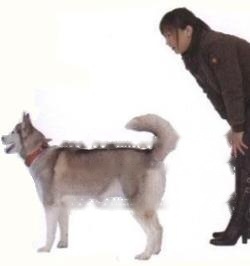As man's best friend, dogs always resolutely obey their master's commands and are very willing to communicate with their owners. Scientists have shown that a dog with normal mental development can express more than 200 kinds of meanings clearly. This shows that dogs have the ability to communicate with their owners. However, it also requires you to understand how your dog communicates in order to understand what your dog is saying to you.

1. Odor signal
Dogs use scent to mark their site or use area. Smell can reveal the signifier's health, social status, hormonal status, and more.
2. Visual signals
When they enter the visual field of each other, the visual signal will replace the smell signal. When two unfamiliar dogs meet freely and unsupervised, they spend some time getting to know each other. At first the dog will stand up straight, and then slowly and carefully approach each other, often taking indirect circles to approach each other. Get close and smell each other, first on the head and face, and then on the genital area where the smell is strongest. Then they may just walk away and the exchange is over. Or when one of the dogs tries to start play, it raises its front paws in the air, swoops down, or invites the other puppy to play with it by barking. The fights in the game look a bit savage, but they are clearly based on their social norms, do not bite too hard, and rarely show obvious dominance.
Tips: Direct and reckless approaches are often interpreted as threatening actions by dogs, which lead to self-defense attacks.
3. Body language
The body language of dogs and wolves is very similar. When dogs are quiet and peaceful, their body posture is relaxed and their facial expressions are peaceful. Remains in normal position (breed varies) tail drooping, body not arched or raised, eyes slightly closed, lip and neck muscles slack. When the dog is confident and wants to show his authority and dominance to another dog, the body is slightly arched and ready for action.
When two dogs meet, body gestures are sometimes used to indicate dominance or submission. Sometimes one dog will put its front paws on the other's back or try to ride the other dog. There are only rare occasions when a dog presses its head against another dog's back or neck to show its dominance.
4. The language of the tail
A dog's tail shows its emotions and intentions. A raised tail indicates that the dog is confident, excited or strong. Tail wagging expresses joy and excitement. The tail is held upright with a small, high-frequency wiggling to indicate that the dog is showing its strength. A drooping tail in a slow wag indicates that the dog is saying, Not sure.
5. Voice communication
Dogs use voice to express their feelings. Generally speaking, a high pitch or high volume indicates frustration or excitement. Barking doesn't mean aggression, it's often a sign of hurry up and play and nice to see you. Growls are aggressive in adult dogs. Some dogs like to play low growls, but their attitude is clear, and some dogs can cadence in the low growls sound. When the dog makes an aggressive growl again, its body will also lower, showing an aggressive posture.
![[Dog Training 5] The training method of pet dog dining etiquette](/static/img/12192/12192_1.jpg)




